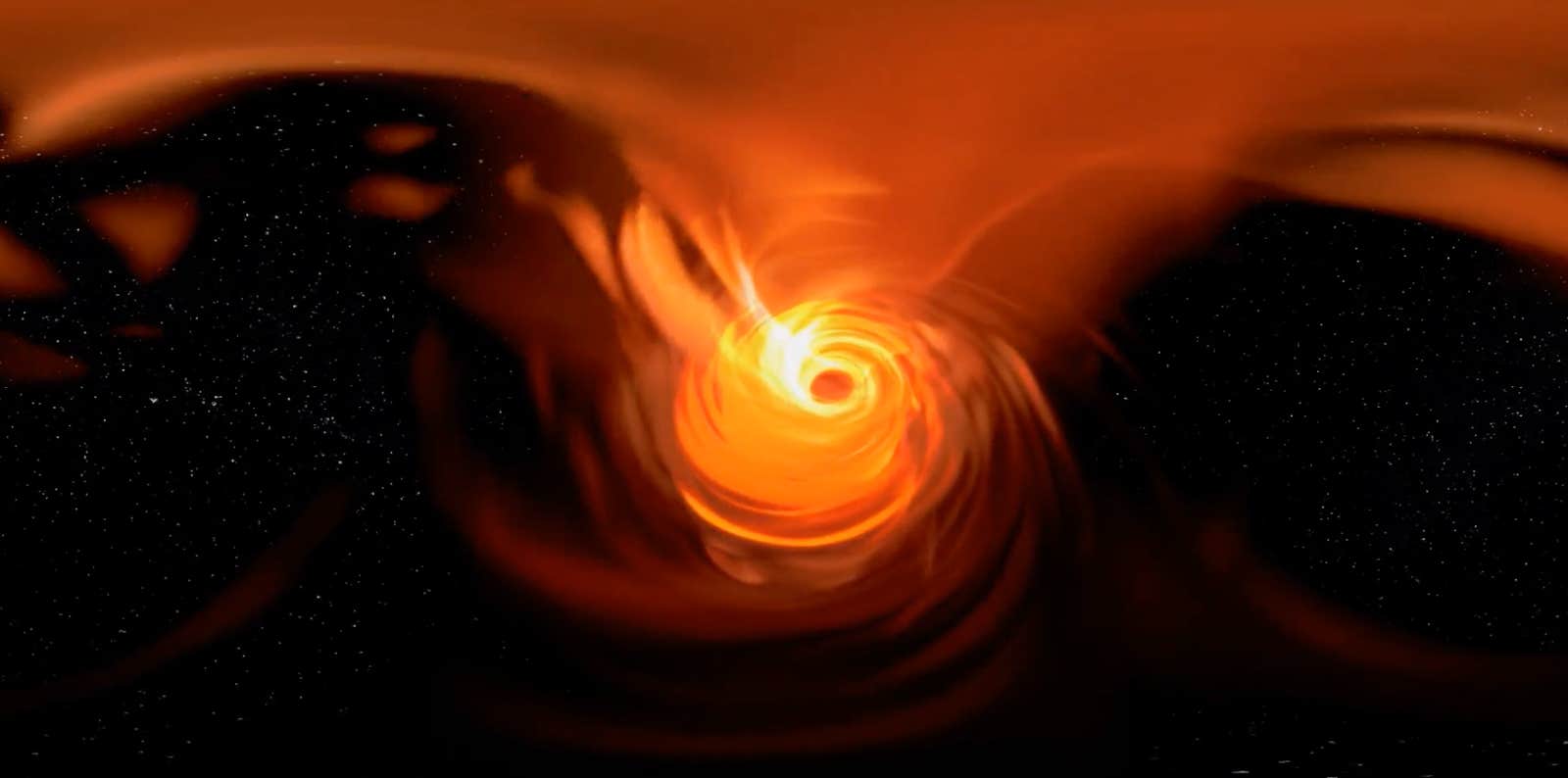Black holes, by definition, are so dense that not even light can escape. But ask any astrophysicist, and they’ll report that black holes are among some of the brightest objects in the universe. What’s going on here?
The answer, in part, is that black holes don’t live alone. The monster black holes at the centers of galaxies are typically surrounded by searing clouds of hot gas. As this material funnels toward the black hole, it can create cosmic auras around the darkest place in the galaxy.
Strangely, the black hole at the center of the Milky Way galaxy isn’t nearly as bright as it should be. Figuring out the mystery of why this black hole is so dim, relatively speaking, will help clarify the connection between the light that we see and what falls in.
Why Black Holes Are So Bright
There are a number of ways that black holes can appear to glow. When gas from nearby stars falls toward the black hole, the gas spirals like water going down a drain. As it does so, it rubs together and gets hot. It’s essentially the same process that Boy Scouts use to light a fire with two sticks, except here the temperature of this gas can reach millions of degrees.
Gas that hot pulls its own atoms apart, creating a sea of positive ions and negative electrons. These churning charged particles generate turbulent magnetic fields, which funnel the gas into two jets pointing in opposite directions. If one of these jets happens to be angled so that it’s pointing toward Earth, we see a brilliantly bright black hole.
But sometimes we don’t have to be located directly in the path of the fire hose. Those jets can also stream out and slam into nearby clouds of gas or even a neighboring galaxy. The collision generates a distinct glow.
Our Dim Monster
At the center of our galaxy lies a surprisingly calm monster. “As a black hole, as an energetic system, it’s almost dead,” said Geoffrey Bower of the Academia Sinica Institute of Astronomy and Astrophysics in Hilo, Hawaii.
The question is why. “We know that there’s some sort of mechanism for preventing material from reaching the center, or reaching the black hole itself and falling in,” said Lía Corrales, an astrophysicist at the University of Michigan, “but we haven’t figured out exactly what that mechanism is.”
One idea holds that as gas falls toward the black hole and heats up, the added pressure pushes the gas back out. Indeed, in a paper published in March 2020 in The Astrophysical Journal, Corrales and her colleagues released the result of a yearslong statistical analysis of observations of the black hole, named Sagittarius A* (“A-star”), from the Chandra X-ray satellite. The study found signs that the hot gas near Sagittarius A* is moving outward and cooling off.
But Sagittarius A* isn’t dead. It pops and gurgles, sometimes getting hundreds of times brighter. Astronomers aren’t sure if these flares are the result of clumps of hot gas falling in, shock waves moving through the gas, or snapping arches of magnetic material, similar to the solar flares that arc out from the sun.
To get the whole picture of what’s happening, astronomers have tried to watch Sagittarius A* through many different types of telescopes at the same time.
Key to this enterprise is the Event Horizon Telescope—11 telescopes spread across Earth that act as a single instrument. The EHT can see how the glowing gas drags around the outskirts of the black hole just before it falls in. Other telescopes see what’s happening farther away from the black hole. Astronomers can then compare these views to clarify what’s causing the flares.
The EHT first started watching Sagittarius A* in 2017 with eight of those 11 telescopes (the remaining three would be added later). Each spring, there’s only a 10-day period in which all of the EHT’s telescopes can see its astronomical targets—an excruciatingly brief observing window that severely reduces the margin for error. Unfortunately, bad weather in 2018 limited observations, and in 2019, technical snafus forced astronomers to cancel the observing run.
In 2017, however, astronomers got lucky. Not only were they able to coordinate the EHT’s run with observations from space-based X-ray telescopes, they happened to be watching when Sagittarius A* let out a flare. Astronomers have not yet released that data.
Unfortunately, the 2020 observing campaign, which was scheduled to start on March 26, was canceled due to the COVID-19 pandemic. Astronomers will have to put off the EHT’s next look at Sagittarius A* until 2021. Our quiet black hole will have to wait.
Lead image: A computer simulation shows hot gas falling into Sagittarius A*, the supermassive black hole at the center of the Milky Way. Credit: J. Davelaar at al. 2018, CompAC
Video embed: Last May, a massive flare erupted from Sagittarius A*, seen here in infrared images taken by the Keck telescope. Credit: T. Do, Keck/UCLA Galactic Center Group

























